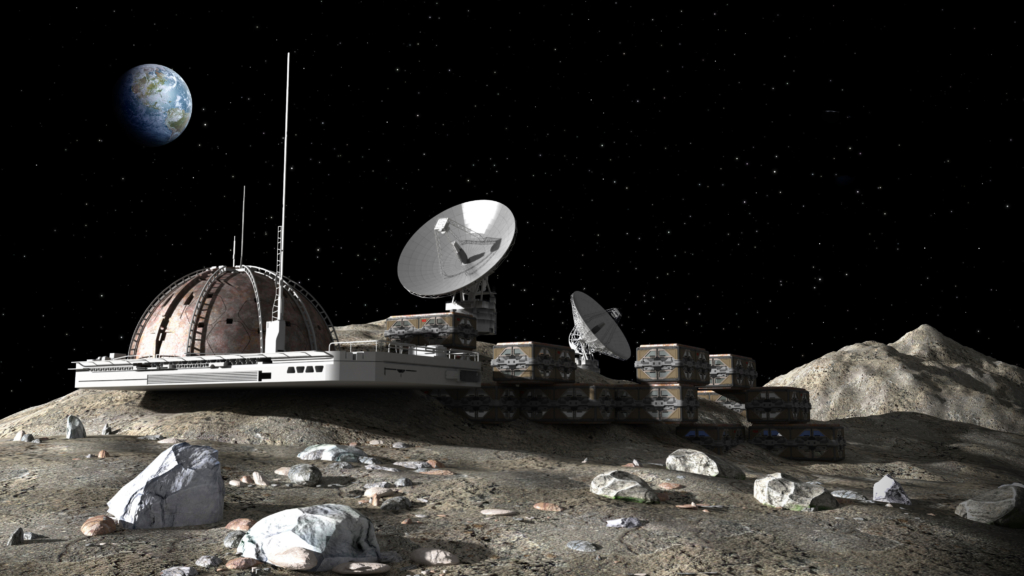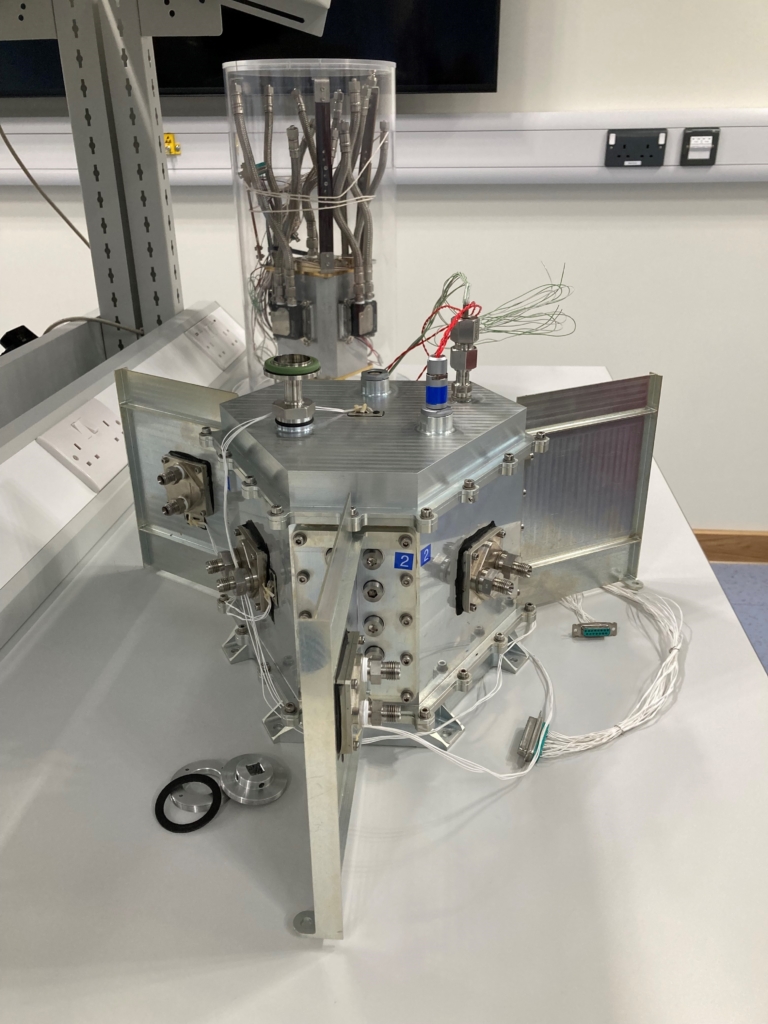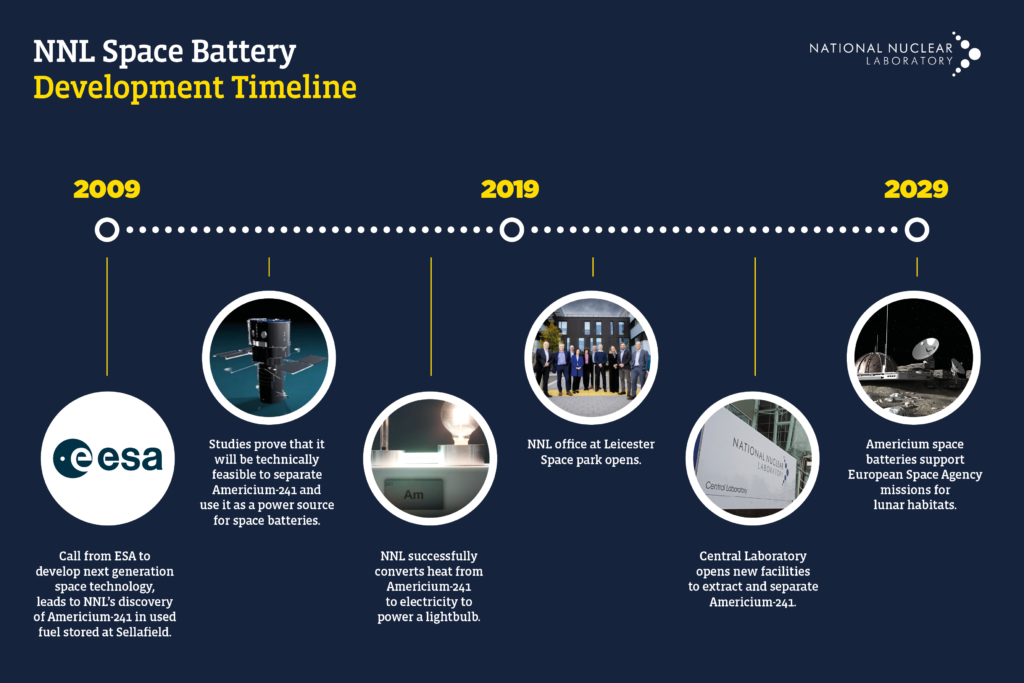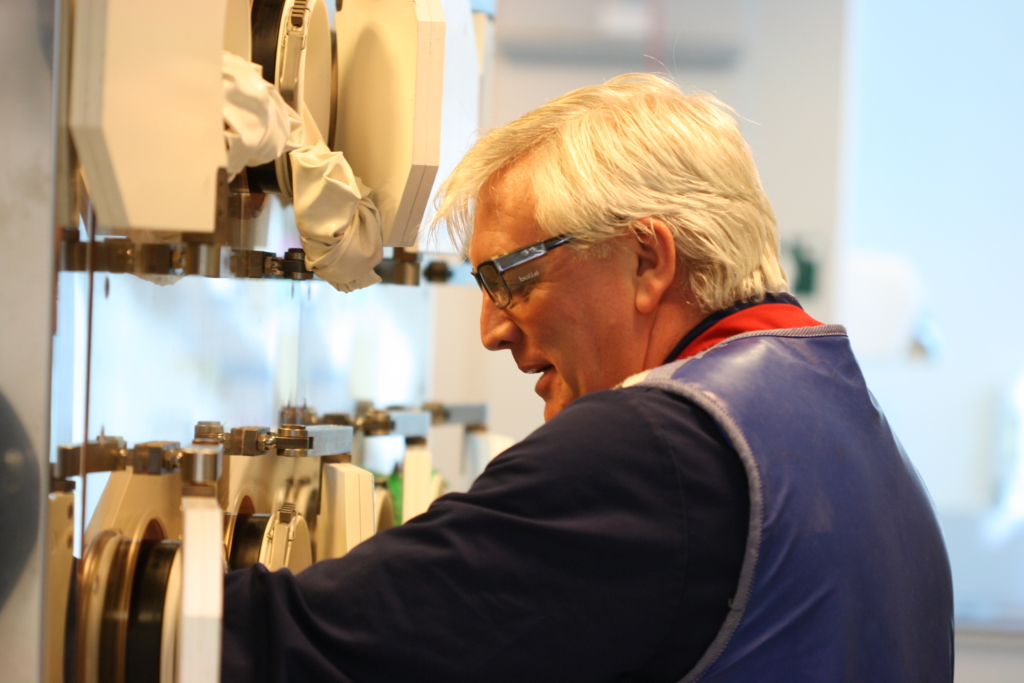
Why we need nuclear power in space?
Breakthrough In Production of Americium-241
Why we need nuclear power in space
Solar panels on space craft and satellites use energy from the sun to provide power. They are used in locations facing the sun and as far out as Jupiter’s orbit, but deeper into space or in regions of shadow, solar radiation is too weak to produce the required power. This is where radioisotope power systems (RPS), or “space batteries” come into play.
In addition, the space industry sees the potential need for micro or very small nuclear reactors to power space craft and surface equipment. There are exciting new developments in nuclear reactor technology. Existing technology for small reactors, such as those used in submarines, generally use pressure water reactors that rely on water as a coolant – not an option in space. Our reactor physicists are working on the next generation of gas-cooled reactors that may become the future of space power. Nuclear reactors for space will need the next generation of fuel, inherently safe and used in gas-cooled, rather than water-cooled reactors. Just one load of fuel will provide power for around 60 years without refuelling. Our scientists are already producing laboratory-scale amounts of this fuel. UKNNL is at the forefront of this innovation for the UK.
Space Battery Uses
Space batteries were invented in the 1950s and were used on all the Apollo moon landings, Mars rovers and the spacecraft currently exploring the deep solar system. They emit steady heat for decades that can be used to keep spacecraft and power systems alive. For example, a lunar night lasts 14 days – which means two weeks without any solar power. Temperatures can drop to around -150°C, damaging the equipment on board. For deep space missions, power means that vital data and images can be sent back to earth. This is why space batteries are on the European Space Agency’s list of ‘mission critical’ technologies and one of the fundamental programmes for the UK Space Agency.
How a space battery works
A space battery, or RPS houses radioactive material that gives off heat as it decays by the production of alpha particles. This energy is used either as heat or can be converted into electricity to power systems and sensors. Typically, the conversion of the heat is done using thermoelectrics, simple passive systems that convert a temperature difference into an electrical current using the Seebeck effect. Other approaches under development include the use of Stirling Engines. These are a dynamic system which add complexity but offer the potential for a greatly improved efficiency for the conversion.
Model of the University of Leicester’s Radioisotope Thermoelectric Generator.

Breakthrough in production of Americium-241
In 2019, following a decade of research, UKNNL scientists used the heat from a small amount of the radioisotope Americium-241 that they had extracted from stored fuel to generate electric current for a small lightbulb. This was a major breakthrough for the space industry, as existing batteries are powered by ever-dwindling supplies of Plutonium-238. Americium-241 has a half-life of over 400 years, making it ideal for deep space exploration. Americium does not occur in nature, but its discovery in the fuel safely stored in the UK by the scientists at UKNNL makes it a very useful by-product. The UK has plentiful supplies of Americium-241 within the stored fuel and this discovery is keeping the UK at the frontier of space technology. This means that what was previously considered as surplus material is now a critical component to the European Space Agency’s missions from the late 2020s and beyond.

To view full size image click here
Americium-241 production
Scientists at UKNNL have successfully extracted and separated Americium-241 in the laboratory for over a decade. The handling and processing techniques they use are the core skills that our scientists develop in our laboratories. The same techniques have provided a breakthrough in nuclear medicine, producing radioisotopes for targeted alpha therapy for some of the most difficult to treat cancers. Having successfully produced Americium-241 at gram scale, we are expanding to production at industrial scale at our world-leading Central Laboratory in Cumbria. We are the only laboratory in the UK currently able to produce Americium-241. Once extracted and separated, our scientists will turn the Amercium-241 into pellets ready to load and test in a space battery.

Benefits to the UK
The laboratory expansion in Cumbria will generate new jobs by the time it is in full operation in 2027. This will bring more highly skilled scientists into an area that suffers rural deprivation. UKNNL has an excellent track record in recruiting apprentices and graduates to grow talent within the industry. The production of americium pellets will provide further opportunities for companies in the supply chain, including our partners at the University of Leicester.
The discovery of Americium-241 in the UK’s store of fuel repurposes what was considered years ago as surplus material. As well as being a valuable product, Americium-241 delivers savings to the UK by reducing the amount of surplus material that requires long-term storage and eventual disposal.
But most of all, this is more than a discovery made by our talented scientists over 10 years ago. UKNNL has progressed this opportunity to ensure that the UK is one of the key global players in space exploration.
